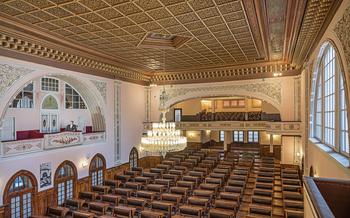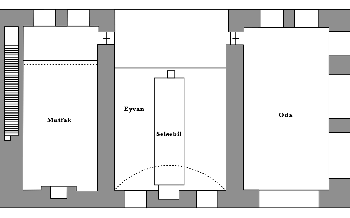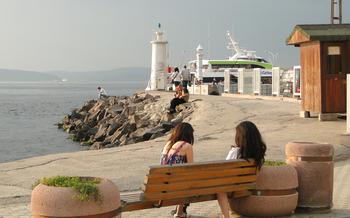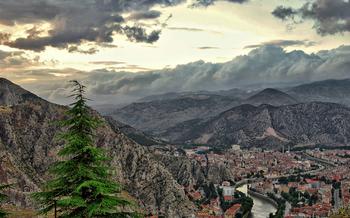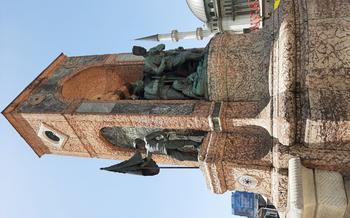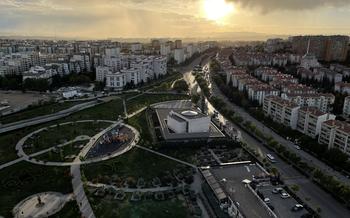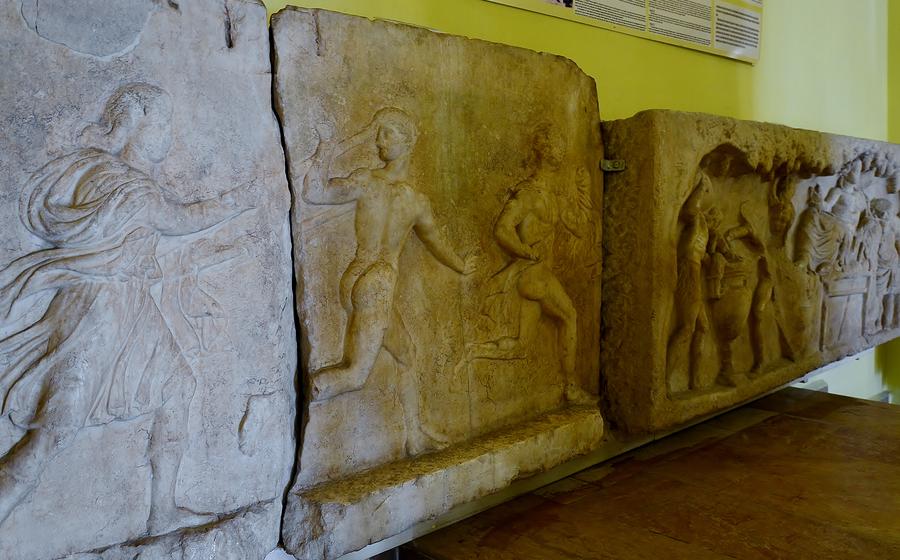
Kırklareli Gazi Mustafa Kemal Atatürk Statue
- Kırklareli Gazi Mustafa Kemal Atatürk Statue: A Symbol of National Pride
- Historical Significance: A Legacy of Leadership
- Architectural Marvel: A Masterpiece of Sculpture
- Symbolism and Representation: A Source of Inspiration
- Location and Accessibility: A Convenient Landmark
- Visiting Tips: Making the Most of Your Experience
- Historical Context: Understanding Atatürk's Legacy
- Atatürk's Reforms: A Vision for a Modern Turkey
- Legacy and Impact: Atatürk's Enduring Influence
- Architectural Details: Unveiling the Statue's Craftsmanship
- Symbolism and Representation: Interpreting the Statue's Message
- Location and Surroundings: Exploring Kırklareli's History
- Visiting Tips: Ensuring a Memorable Experience
- Historical Significance: Understanding Atatürk's Role
- Insider Tip: Unveiling a Hidden Gem
Kırklareli Gazi Mustafa Kemal Atatürk Statue: A Symbol of National Pride
In the heart of Kırklareli, a city steeped in history and national pride, stands the majestic Kırklareli Gazi Mustafa Kemal Atatürk Statue. This iconic monument, a testament to the legacy of Turkey's revered father, Mustafa Kemal Atatürk, serves as a poignant reminder of his unwavering leadership and the transformative role he played in shaping modern Turkey.
Erected in 1935, amidst the fervor of the newly established republic, the statue stands tall, embodying the spirit of unity, progress, and modernization that Atatürk championed. Its historical significance is deeply intertwined with the Turkish War of Independence, a pivotal moment in the nation's history when Atatürk's strategic genius and unwavering determination secured Turkey's freedom and independence.
The statue's design, a masterpiece of sculpture, captures the essence of Atatürk's strength, determination, and vision. Cast in bronze, a symbol of durability and resilience, it depicts Atatürk astride a majestic horse, his gaze fixed firmly ahead, exuding an aura of authority and leadership. The intricate details of his military uniform, the flowing mane of the horse, and the powerful stance convey a sense of dynamism and purpose.
Located in the heart of Kırklareli's city center, the statue is easily accessible on foot, by public transportation, or by private vehicle. Its prominent position, overlooking the city's main square, serves as a constant reminder of Atatürk's enduring presence and the ideals he stood for. The statue is surrounded by other historical landmarks and attractions, inviting visitors to delve deeper into the rich heritage of Kırklareli.
Historical Significance: A Legacy of Leadership
Mustafa Kemal Atatürk, the revered father of modern Turkey, played a pivotal role in shaping the nation's destiny during a tumultuous period of history. As the leader of the Turkish national movement, he spearheaded the Turkish War of Independence, a heroic struggle against foreign occupation and the remnants of the Ottoman Empire. Atatürk's strategic brilliance and unwavering determination led to the establishment of the Turkish Republic in 1923, marking a new era of independence and self-governance.
As the first president of the newly formed republic, Atatürk embarked on an ambitious modernization program, transforming Turkey from a traditional, agrarian society into a progressive, secular nation-state. His reforms touched every aspect of Turkish society, from the abolition of the caliphate and the introduction of Western-style laws to the emancipation of women and the promotion of education. Atatürk's vision for a modern and progressive Turkey continues to inspire generations, leaving an indelible mark on the nation's identity and trajectory.
Architectural Marvel: A Masterpiece of Sculpture
The Kırklareli Gazi Mustafa Kemal Atatürk Statue stands as a testament to the skill and artistry of the renowned sculptors who brought it to life. Its imposing dimensions, intricate details, and symbolic use of materials make it an architectural marvel that commands attention and admiration.
Standing tall at an impressive height, the statue exudes a sense of grandeur that befits the legacy of Mustafa Kemal Atatürk. The intricate details of Atatürk's facial features, military uniform, and the horse he rides are meticulously rendered, showcasing the exceptional craftsmanship of the sculptors. The use of bronze as the primary material adds to the statue's durability and symbolic significance, representing strength and permanence.
The collaboration of renowned artists and sculptors resulted in a masterpiece that harmoniously blends realism and symbolism. The statue captures the essence of Atatürk's leadership and vision, while also embodying the spirit of the Turkish nation. Its architectural significance extends beyond its aesthetic appeal, as it serves as a symbol of national pride and a reminder of the country's rich history and cultural heritage.
Symbolism and Representation: A Source of Inspiration
The Kırklareli Gazi Mustafa Kemal Atatürk Statue stands as a powerful symbol of Atatürk's strength and determination. The statue portrays him in a commanding pose, with his right arm outstretched and his gaze fixed firmly ahead. This posture exudes a sense of authority and leadership, reflecting Atatürk's unwavering commitment to guiding Turkey towards progress and modernization.
The statue also incorporates several symbolic elements that reinforce its message of unity, progress, and modernization. The Turkish flag, prominently displayed behind Atatürk, serves as a reminder of his dedication to the nation and its people. The national emblem, featuring a crescent moon and a star, further emphasizes Turkey's identity and independence.
Through its skillful representation of Atatürk's legacy, the statue conveys a powerful message of inspiration to all who behold it. It serves as a reminder of the transformative power of leadership and the importance of striving for progress and development. The statue stands as a testament to Atatürk's vision for a strong and independent Turkey, inspiring generations to come to embrace his ideals and work towards a brighter future.
Location and Accessibility: A Convenient Landmark
The Kırklareli Gazi Mustafa Kemal Atatürk Statue enjoys a prominent position in the heart of Kırklareli's city center, making it easily accessible by foot, public transportation, or private vehicle. Situated in the midst of other historical landmarks and attractions, the statue serves as a convenient starting point for exploring the city's rich history and cultural heritage. Ample parking options are available nearby, ensuring a hassle-free visit for those arriving by car. Whether you choose to stroll leisurely through the city center or take advantage of the efficient public transportation system, reaching the statue is a breeze, allowing you to immerse yourself in the legacy of Atatürk and the vibrant atmosphere of Kırklareli.
Visiting Tips: Making the Most of Your Experience
To fully appreciate the grandeur and significance of the Kırklareli Gazi Mustafa Kemal Atatürk Statue, it's important to plan your visit carefully. For the best lighting and fewer crowds, aim to visit during the early morning or late afternoon, when the sun's rays cast a warm glow on the statue. Dress appropriately to show respect for the site and ensure your comfort during your visit. Capturing memorable photos with the statue as a backdrop is a must, so bring your camera or smartphone to capture this iconic landmark. To enhance your experience, consider combining your visit with other nearby attractions, such as the Kırklareli Museum or the Bulgarian Church, for a comprehensive understanding of the city's rich history and culture.
Historical Context: Understanding Atatürk's Legacy
The early 20th century witnessed the decline of the once-mighty Ottoman Empire, burdened by internal strife and weakened by its involvement in World War I. Amidst this tumultuous period, Mustafa Kemal Atatürk emerged as a charismatic leader, uniting the Turkish people under his banner.
The Ottoman Empire, a sprawling multinational empire that had ruled over vast territories for centuries, was facing numerous challenges. Internal divisions, coupled with the empire's participation in World War I on the side of the Central Powers, had left it vulnerable and on the brink of collapse.
The war had a devastating impact on the Ottoman Empire. Heavy casualties on the battlefields, coupled with the loss of territories in the Middle East and the Balkans, left the empire weakened and demoralized. The empire's defeat in the war marked the end of an era and paved the way for the rise of national movements seeking independence.
Mustafa Kemal Atatürk, a brilliant military strategist and a visionary leader, played a pivotal role in the Turkish national movement. He organized the resistance against the Allied forces occupying Anatolia and led the Turkish War of Independence, which culminated in the establishment of the Turkish Republic in 192
Atatürk's Reforms: A Vision for a Modern Turkey
Atatürk's vision for a modern and progressive Turkey drove his ambitious reform agenda. He abolished the Ottoman caliphate, a symbolic and political institution that had defined the empire for centuries. In its place, he established a secular republic, separating religion from state affairs. This bold move laid the foundation for a modern, democratic Turkey.
Atatürk also introduced a comprehensive set of Western-style laws and institutions. He implemented civil codes based on European models, replacing the traditional Islamic legal system. He established a modern education system, opening schools and universities for both boys and girls. These reforms aimed to modernize Turkey's legal, educational, and social frameworks, bringing the country in line with contemporary European standards.
Furthermore, Atatürk championed the emancipation of women. He granted women the right to vote and to hold public office, a groundbreaking step in a society that had traditionally restricted women's roles. His reforms aimed to create a more egalitarian society, where women could participate fully in all aspects of public life.
Atatürk's modernization efforts extended to all spheres of Turkish society. He promoted industrialization and economic development, establishing factories and encouraging foreign investment. He also introduced agricultural reforms to improve productivity and modernize farming practices. Through these reforms, Atatürk sought to transform Turkey into a modern, industrialized nation, capable of competing on the global stage.
Legacy and Impact: Atatürk's Enduring Influence
Atatürk's legacy extends far beyond his lifetime, shaping the political, social, and cultural fabric of modern Turkey. He is revered as the father of the Turkish Republic, a visionary leader who transformed a crumbling empire into a modern nation-state. His reforms and principles continue to influence Turkish society, serving as a guiding force for successive generations.
Through museums, memorials, and educational programs, Atatürk's legacy is meticulously preserved and celebrated. His mausoleum in Ankara, the Anıtkabir, is a national shrine that attracts millions of visitors each year, paying homage to his life and achievements. Educational institutions, streets, and public spaces bear his name, serving as constant reminders of his contributions to Turkey's development.
Atatürk's ideas and principles remain relevant in contemporary Turkey, shaping political discourse and social policies. His emphasis on secularism, modernization, and national unity continues to resonate with many Turks, who see him as a symbol of progress and enlightenment. His enduring impact is evident in Turkey's commitment to democracy, human rights, and economic development, all of which bear the imprint of Atatürk's vision for a strong and independent Turkey.
Architectural Details: Unveiling the Statue's Craftsmanship
The Kırklareli Gazi Mustafa Kemal Atatürk Statue stands as a testament to the intricate artistry and craftsmanship that went into its creation. The statue's lifelike portrayal of Atatürk's facial features and military uniform is a testament to the sculptor's attention to detail. The horse upon which Atatürk is mounted is depicted with a dynamic pose, conveying a sense of strength and movement. Moreover, the statue is adorned with bas-reliefs that depict scenes from Atatürk's life and achievements, adding further depth and meaning to the overall design. The harmonious blend of realism and symbolism in the statue's overall design creates a powerful and awe-inspiring work of art that captures the essence of Atatürk's legacy.
Symbolism and Representation: Interpreting the Statue's Message
The Kırklareli Gazi Mustafa Kemal Atatürk Statue stands as a powerful symbol of national pride and unity. Through its intricate design and symbolism, the statue conveys a profound message that resonates with the Turkish people.
Atatürk, depicted on horseback with a determined expression, embodies strength, leadership, and military prowess. The horse itself symbolizes the power and energy of the Turkish nation, while the Turkish flag and national emblem, prominently displayed on the statue, represent unity, independence, and national pride.
The statue's overall composition evokes a sense of progress and modernization, reflecting Atatürk's vision for a modern and progressive Turkey. The dynamic pose of the horse, with its forward momentum, suggests movement and change, symbolizing Atatürk's drive to transform Turkish society.
The statue serves as a reminder of Atatürk's legacy and his enduring impact on the nation. It is a symbol of his unwavering commitment to the Turkish people and his vision for a strong, independent, and prosperous Turkey.
Location and Surroundings: Exploring Kırklareli's History
The Kırklareli Gazi Mustafa Kemal Atatürk Statue stands proudly in the heart of Kırklareli's city center, overlooking the bustling main square. Its prominent position serves as a constant reminder of Atatürk's legacy and his vision for a modern and progressive Turkey. The statue's proximity to other historical landmarks, such as the Kırklareli Museum and the Bulgarian Church, invites visitors to delve deeper into the rich history and cultural heritage of this vibrant city.
Within walking distance of the statue, visitors can immerse themselves in the local culture by exploring the narrow cobblestone streets, lined with traditional Turkish shops, cafes, and restaurants. The air is filled with the tantalizing aromas of Turkish cuisine, inviting visitors to savor the flavors of this culinary paradise.
Whether you're interested in history, architecture, or simply soaking up the local atmosphere, a visit to the Kırklareli Gazi Mustafa Kemal Atatürk Statue is an experience that will leave you with lasting memories.
Visiting Tips: Ensuring a Memorable Experience
To make the most of your visit to the Kırklareli Gazi Mustafa Kemal Atatürk Statue, consider the following tips:
Timing is Key: Plan your visit for optimal lighting and fewer crowds. Early mornings or late afternoons offer the best conditions for capturing stunning photographs with the statue as a majestic backdrop.
Dress Appropriately: Show respect for the significance of the statue by dressing appropriately. Casual attire is acceptable, but avoid wearing shorts or tank tops to maintain a respectful demeanor.
Capture Memorable Moments: Take advantage of the opportunity to capture memorable photos with the statue. Experiment with different angles and perspectives to create unique and lasting memories of your visit.
Enrich Your Experience: Consider joining a guided tour or utilizing audio guides to gain deeper insights into the history and significance of the statue. These guided experiences provide valuable information and context, enhancing your appreciation for Atatürk's legacy.
Explore Further: Combine your visit to the statue with other nearby attractions for a comprehensive experience. The Kırklareli Museum, located just a short walk away, offers a fascinating glimpse into the region's rich history and culture.
Historical Significance: Understanding Atatürk's Role
Atatürk's role in shaping the history of Turkey cannot be overstated. As the leader of the Turkish national movement, he played a pivotal role in securing Turkey's independence during the Turkish War of Independence. His vision and leadership were instrumental in the establishment of the Turkish Republic in 1923, marking a new era in the country's history.
Atatürk's presidency was characterized by a series of progressive reforms aimed at modernizing and secularizing Turkey. He abolished the Ottoman caliphate, separating religion from the state, and introduced Western-style laws and institutions. His reforms extended to the emancipation of women, granting them equal rights and opportunities.
Atatürk's legacy extends far beyond his presidency. His vision for a modern, progressive, and independent Turkey continues to shape the country's political, social, and cultural landscape. He is revered as the father of modern Turkey, and his ideas and principles remain relevant and influential to this day.
Insider Tip: Unveiling a Hidden Gem
To truly immerse yourself in the history and culture of Kırklareli, venture beyond the statue and explore the nearby Kırklareli Museum. This hidden gem houses a rich collection of artifacts that narrate the fascinating story of the region's past. From ancient relics to captivating exhibits on local traditions, the museum offers a deeper understanding of Kırklareli's unique heritage.
After your visit to the museum, tantalize your taste buds with the delectable flavors of Kırklareli cuisine. Indulge in mouthwatering dishes that blend traditional Turkish flavors with regional influences. Savor the aromatic kebabs, succulent seafood delicacies, and the region's signature dish, Kırklareli köftesi (meatballs), prepared with a special blend of spices and herbs.
Take advantage of your time in Kırklareli to wander through the picturesque streets of the city center, where you'll discover charming cafes, quaint shops, and architectural wonders. Embrace the vibrant atmosphere as you interact with friendly locals, eager to share stories and insights into their way of life.
Kırklareli is a treasure trove of hidden gems, waiting to be discovered by curious travelers. Whether you're a history buff, a foodie, or simply seeking an authentic cultural experience, this charming city has something to offer everyone.


